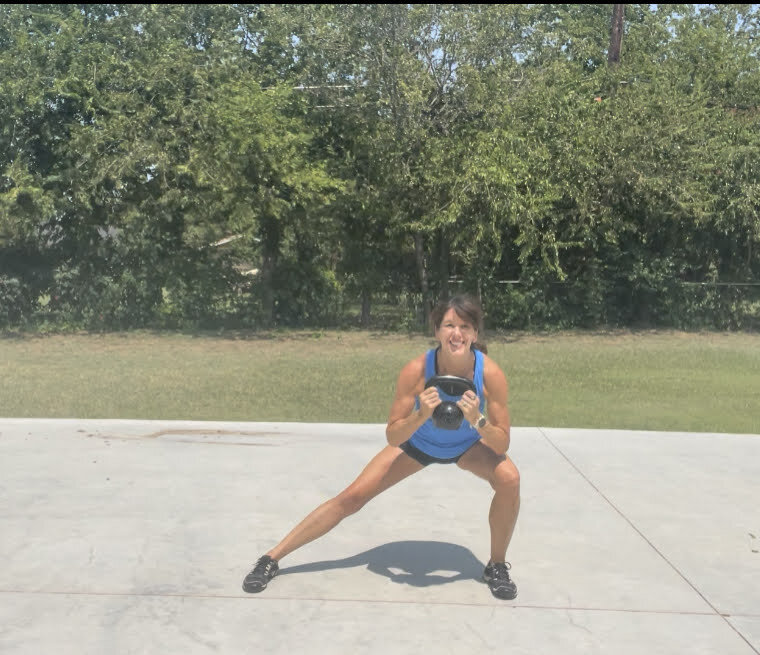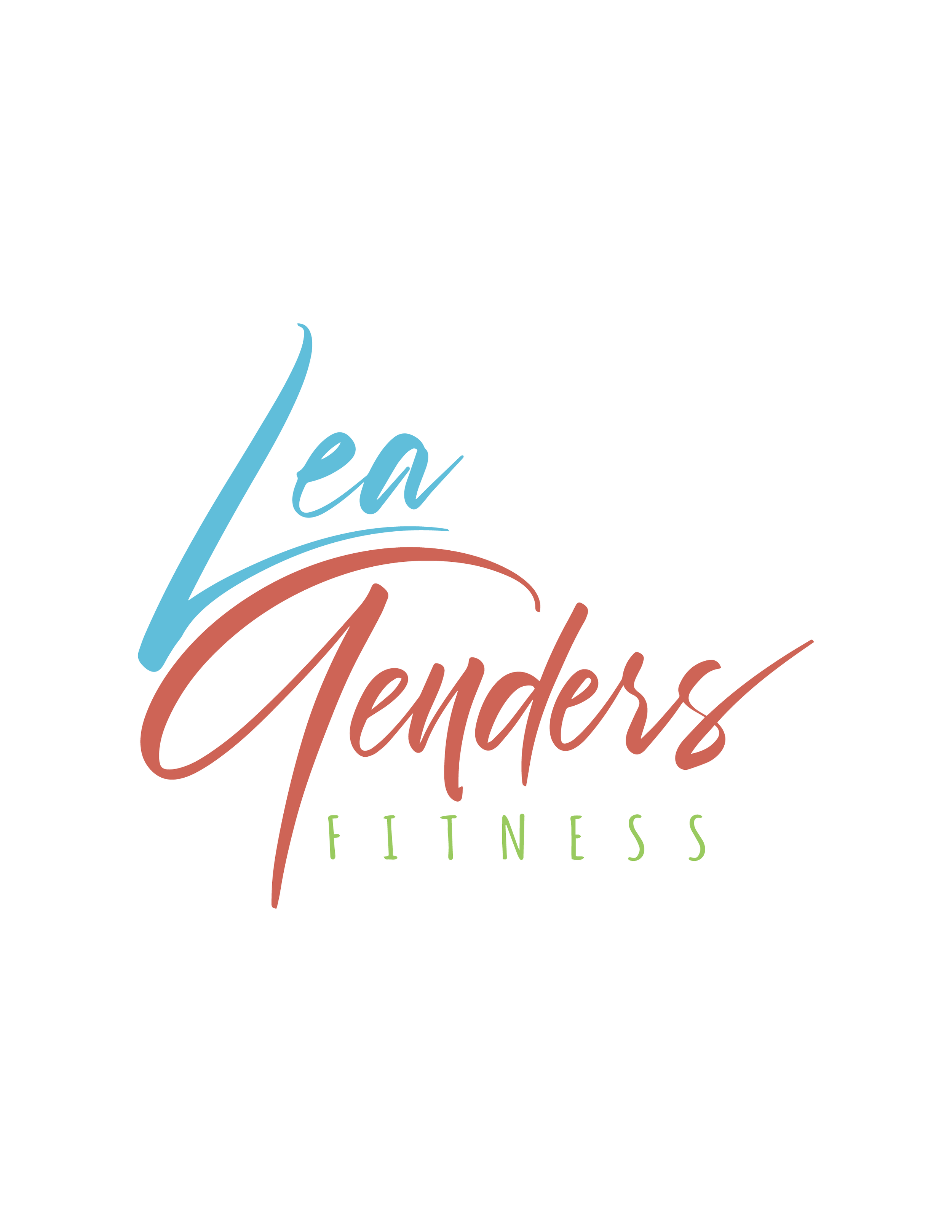I put together this runner-specific kettlebell training for runners to improve performance and help prevent injuries. It requires one piece of equipment—a kettlebell, and maybe thirty minutes two or three times per week. It includes the types of strength exercises that benefit running performance and injury prevention the most. So there is no wasted time doing exercises that won't necessarily help your running.
Most runners know that they should strength train but they may have misconceptions about how that will affect their training schedule. Many runners don't have a lot of spare time or equipment. Most of all, they worry they will be sore and not be able to run! I will show you how to choose the correct weight and how to fit it all in with your running training schedule.
You won't see a bench press or bicep curls in this program because while those exercises can be helpful for building strength or muscle, they don't directly benefit running performance in a meaningful way. We'll focus on the exercises that will bring the most return on your strength training investment. We'll strength train like runners, not like bodybuilders.
This kettlebell workout is a five-week introduction to strength training for runners, perfect for runners who are not currently consistently strength training. Perform this runner-specific kettlebell workout either two or three times per week, with at least a day or two between strength workouts.
You can do the workout at the gym if you'd like, but if you have a kettlebell at home, you could do it in your living room, in your backyard, or at the track.
Soreness is natural when you begin a new program, but it shouldn’t be debilitating or long-lasting. Any extreme or ongoing soreness is a sure sign that you are doing too much, too soon. If this happens, back off the intensity to give your body time to adapt.
How to choose an appropriate kettlebell weight
All weighted exercises are between 8-10 reps each. Choose a weight that you could do about 12 reps. You will stop between 8-10 reps which means that when you finish the set, you will feel like you could lift it about three more times.
We are not maxing out; if you are grinding out the last rep with a struggle, go slightly lighter. If you could easily keep going for 15 reps or more, then choose a heavier weight. It may take some experimenting to find the starting weight, and that's ok. Err on the side of too light to begin. If you finish your set of 10 and realize it was too light (you feel like you could pump out five or more), then no problem, choose a heavier weight for your next set.
I'd rather see you go too light at first than too heavy and burn yourself out (or worse, get hurt). Strength training is a life-long pursuit, and there is plenty of time to progress and get stronger. Always better safe than sorry while your body, muscles, joints, and ligaments adapt to this new work.
Equipment
All you need to get started is a single kettlebell, but I would recommend eventually getting a couple of different kettlebells of varying weights so you can increase weight as you improve. Most runners will likely use between 10 and 30 pounds, but needs will vary based on experience. If you want lighter weights or heavier weights, choose what is most appropriate for your current fitness level.
HOW TO FIT THE KETTLEBELL WORKOUTS IN YOUR RUNNING SCHEDULE
You have a few choices on how to fit in your schedule. Choose the one that makes the most sense with your current training plan, allows you proper recovery, and fits in your lifestyle.
You could do the strength training workouts before you run on your easy runs that are 40 minutes or less. You could do the kettlebell workout for about 30 minutes, then head out for an easy-effort run.
PROS: In about an hour, you can get in both a running and strength workout, which allows more time in the week for full rest days.
CONS: It's possible that either your run or your strength workout won't be as strong due to fatigue from the other activity.
You can do the strength training workouts on a hard-effort running day (tempo, intervals, hills, etc.) but break up the workouts into two different parts of your day. For example, run in the morning, do the strength workout after dinner (or break up however you see fit).
PROS: You get your hard workouts all done in one day, so you have more time in the week for full rest days. Breaking up the workouts allows you to recover and refuel between workouts, so it is not as likely that the fatigue from one workout will have a big impact on the other.
CONS: A lot of people don't have the flexibility for two workouts a day.
You can run on one day and do the strength training workouts on your rest days from running.
PROS: This works for lower volume runners who run three or four days per week.
CONS: If you run five or six days per week, this doesn't allow flexibility for full-rest days from running and strength training. I recommend always taking at least one or two full rest days a week for recovery and performance improvement.
The Kettlebell for Runners Exercises
You will perform the same exercises for week one and week two.
Week one
8-10 reps (each side if applicable)
Two sets
Two times per week
Week two
8-10 reps (each side if applicable)
Three sets.
Two times per week
Perform all exercises as straight sets. That means complete the reps for the exercise, rest for a minute, then complete the additional set(s). Rest again, then perform the next move. Rest for one minute between sets and exercises.
Download the workout log and view demonstration videos for each exercise in this
Use discount code BLOGFREE to access the course for free.
Step-up to balance weighted (each leg)
Hold the kettlebell at chest level
While facing the box, step up on the box with your right leg so your entire foot is stable on the elevated surface.
Push through your heel to stand tall while balancing on one leg.
Bring the other leg up, bend the knee and hold until your thigh is parallel with the ground.
Step back down and repeat on the other side.
To make it easier: perform without weight.
Overhead rotation (each side)
Hold a kettlebell at chest level
Push the weight overhead to the right as you pivot your left foot.
Return to center, then push the weight overhead to the left as you pivot your right foot.
Make sure your gaze follows the weight as you push overhead to rotation. Rotate your body and push off the opposite foot as it pivots.
Side lunge contralateral (each side)
Hold the kettlebell in your right hand.
Take a large step to the left side and lunge by pushing your hips back and bending your left knee.
Sit back into the lunge.
Bring the weight in your right hand to touch the ground next to your left foot.
Do not round your back or allow your knee to move forward beyond your toe.
Be sure to keep your torso and toes facing forward.
Repeat on the other side.
Single-arm bent-over row (each side)
Hold the kettlebell in one hand at the side of your body
With your back straight and shoulder blades together, hinge at the hips and lower your body.
From this position, row the weight up by pulling your elbow back, keeping it close to your side.
Complete the reps on one side and repeat on the other side.
Incline-push up
Start in a straight arm plank position with your hands on a stable elevated surface.
Keep your elbows close to your sides and hold your core tight.
Bend your elbows to bring your chest all the way down to the surface and push back up until your arms are straight.
To make it easier: raise the elevation of the surface for less resistance.
To make it harder: Lower the elevation or do from the floor. Only do the exercise at the harder level if you can bring your chest all the way to the ground/lower surface and push up with good form.
Romanian deadlift
Grip a kettlebell with both hands:
With your back straight, your shoulder blades together, and your knees soft, push your butt back to hinge at the hips and lower until the kettlebell is right below your knees.
Keep your arms straight, and return to standing.
If you can easily do 12 reps without fatigue or form breakdown, use heavier weights for your next set.
Week three
8-10 reps
Three sets
Two to three times per week
Single-leg deadlift
Grip a kettlebell with both hands
Keep the knee on your standing leg slightly bent. Don't lock out your knee.
Hinge at the hips, keep your back straight.
Don't allow your standing knee to cave in towards the center; think about keeping your knee lined up over your middle toe.
Keep your pelvis square to the ground.
Try to prevent your body from rotating. The anti-rotation helps build core strength.
Perform the reps in a slow controlled manner. Don't rush it as you hinge or return to standing. Faster reps may be less effective as you rely on momentum and not muscles to perform the reps.
To make it easier, do without weights
To make it harder, hold in the weight in one hand on your standing leg side. To increase the challenge further, hold the weight in the opposite hand than your standing leg.
Walking lunge w/twist
Grip a kettlebell with both hands at chest level.
With your feet hip-width apart and your toes pointed straight ahead, hold your core stable and back straight and take one large step with your right leg to lunge forward until your front knee is lined up over your ankle, and your right thigh is parallel to the floor.
Twist your torso in the direction of your forward leg.
Return to center and push up to standing.
Repeat on the other leg.
Alternate legs until all reps are completed for each leg.
Squat w/overhead press
Hold a kettlebell at chest level
Simultaneously bend at the hips and knees to lower into a squat.
As you return to standing, push your arms overhead with momentum.
Slowly lower the weight to reset the weight at your chest and repeat.
Curtsy lunge
Grip the kettlebell and hold it at chest height.
Stand with your feet hip-width apart.
Cross your right leg behind the body and to the left.
Bend left knee 90 degrees, or as low as your flexibility will allow.
Return to standing
Repeat on the other leg and alternate sides until all reps are completed.
Incline-push up
See instruction above.
Romanian deadlift
See instructions above.
You will perform the same exercises for weeks four and five.
Week four
8-10 reps (each side if applicable)
Three sets
Two-Three times per week
Week five
8-10 reps (each side if applicable)
Four sets
Two-Three times per week
Increase weight on repeating exercises, if possible
Single-leg deadlift w/row
Grip a kettlebell with one hand at your side.
Keep the knee on your standing leg slightly bent. Don't lock out your knee.
Hinge at the hips, keep your back straight.
Don't allow your standing knee to cave in towards the center; think about keeping your knee lined up over your middle toe.
Keep your pelvis square to the ground.
From this position, row the weight up by pulling your elbow back, keeping it close to your side.
Perform the reps in a slow controlled manner.
Repeat on the other side.
Box jump
Stand facing the box with your knees slightly bent.
With both feet jump onto the elevated surface.
Be sure your whole foot/heels land securely on the box (not hanging off the edge)
Land softly with bent knees.
Step back down one leg at a time.
Reset your form between each jump (don't rush).
Adjust the height of the box to make it easier or harder.
Squat w/rotation
Hold the kettlebell at chest level and bend at the hips and knees at the same time to lower into a squat.
As you come up, push the weight overhead to the right as you pivot your left foot.
Bend at the hips and knees to lower into a squat again
This time push the weight overhead to the left as you pivot your right foot.
Make sure your gaze follows the weight as you push overhead to rotation. Rotate your body and push off the opposite foot as it pivots.
To make it easier: Push the weight from your chest to each side without the squat.
To make it harder: Use a heavier weight*
Goblet side lunge
Hold the kettlebell at chest level
Take a large step to the left side and lunge by pushing your hips back and bending your left knee.
Sit back into the lunge.
Do not round your back or allow your knee to move forward beyond your toe.
Be sure to keep your torso and toes facing forward.
Return to center and repeat on the other side.
Push-up to side plank
Start in a straight-arm high plank position with your wrists directly under your shoulders and your legs slightly wider than hip-width for stability.
Keep your body in a straight line from your shoulders to ankles while engaging your core. Do not allow your hips to hike up or sag down.
Bend your arms to lower your chest to the ground and push back up to the plank position.
Pivot to the side to move into a straight-arm side plank position
Return to center, then pivot to the other side
To make it easier: Remove the pushup component.
Romanian deadlift
Download the workout log and view demonstration videos for each exercise in this free kettlebell course!
Use discount code BLOGFREE to access the course for free.
Need more personalized help?
Did you like this post? Do you know someone who might benefit? It helps me when you share with your friends and followers on Facebook, Twitter, or Pinterest.
Questions? I’d love to help.
































Much of what we experience as suffering is just the story we tell ourselves about a situation. Recently, this simple shift in perspective gave me the clarity to finally make a massive decision I have been putting off for years. It is time for a major update.